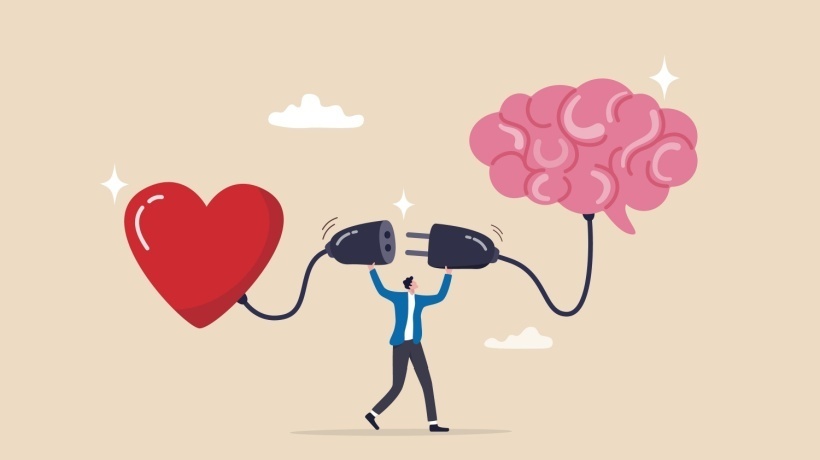Emotional Learning And The Importance Of The Amygdala In The Learning Process
The first screen in your eLearning course: that’s where your online learners’ emotions are triggered. None of us can help it – our amygdala is the part of the brain that deals with the fight/flight response. In emotional eLearning terms, this center of the brain triggers a feeling in the online learner when they feel negativity. Let’s imagine that their first reaction upon commencing the eLearning course is: “this is boring!” Or, worse, “this is irrelevant!” Their amygdala will trigger a feeling that they want to give up, there and then. Fight – they’ll throw their laptop. Flight – they’ll click the “exit” button.
What Is The Amygdala?... A Closer Look At The Nut-Shaped Neurons
The amygdala is actually a set of neurons in the brain’s medial temporal lobe that bears an uncanny resemblance to an almond. It helps us store memories and process emotional events, primarily. However, it also plays a more fundamental part in how we deal with fear. For example, when something stimulates our sense of terror, it’s our amygdala that dictates how we respond. In terms of eLearning, it’s the developer/designer’s job to ensure that the eLearning environment is conducive to information processing. In short, you don't want to set off the amygdala with negative or stressful stimuli that makes online learners want to flee. Or, distracts them to the point that they cannot assimilate the ideas and concepts, for that matter.
Creating A Positive Connection
An emotional connection to eLearning is the biggest influence on memory retention. Emotion triggers memory, So, you want to make your eLearning content relatable to the online learner’s real-world experience. Above all, that emotional connection needs to be positive right from the welcome screen. How, then, can you foster a positive eLearning experience? Here are 5 of the best design strategies to employ.
1. Personal Learning Goals
What am I going to gain from completing this eLearning course? Is it relevant and interesting to me? Have I done all of this before? Every online learner needs to be able to understand the context behind the eLearning course they are completing. An individual learning path and a set of learning objectives should be in place before they begin. This will help them recognize the value in the eLearning activity. Your analysis of eLearning course data and learner preferences will help you design appropriate learning goals.
2. Characters
At some point in your eLearning course, you’ll need to refer to a character to illustrate a point. There is huge scope for creating a negative emotional response here. Consider culture, location, and choice of words very carefully here. According to emotional eLearning, an online learner needs to be able to recognize something of themselves or a close colleague, in each character you design.
3. Real-World Scenarios And Simulations
Use language, visual aids, and stories that appeal to the online learners’ emotions. These could even include relating the online training to a better customer experience. For example, something that would improve their working life. Create a link to the online learners’ inquisitive nature and individual emotions by putting them at the center of the story. You could even try building them into a branching scenario or simulation within the eLearning course if you have appropriate eLearning authoring tools.
4. Fun And Games!
There’s rarely a subject matter that you will encounter that doesn’t lend itself to a game, quiz or activity. Generally, even the heaviest eLearning course benefits from being lightened. This helps to keep the tone light and to provide a break for the brain. It also staves off the possible feelings of boredom, stress, or fear of not understanding. That said, you can have too much of a good thing. Use humor in small doses and don’t let fun, conversational tones overpower professionalism. Online learners still have to achieve the learning objectives and goals.
5. Challenge – But Pitch At The Right Level
Do you remember sitting in an exam room and feeling like you couldn’t quite get hold of the right answer? That’s not your memory – it’s the amygdala, triggering a “flight” response: panic. Your memory didn’t fail you. The question was just too difficult for you. Bring that response to eLearning. What if your online learners start to feel fear and panic? There is no way that they can perform. Be careful that the challenges you are setting are allowing just enough room to grow and learn, without creating stress or frustration. (Incidentally. That was a perfect example of using a long-term memory to embed a concept. You pictured that exam room, didn’t you? You won’t forget the advice that came alongside that image.)
Word Of Warning…
Remember that you need to avoid amygdala triggering a negative response at any time in the eLearning course. You have to captivate the online learner throughout . Give them a reason to progress to the end. This could be a progress bar, quick quizzes rewarding progress badges, or even a “high score” to beat. You will need to be especially aware of this if you are working with more “dry” content. Some of the most effective policy or legal training make you forget you are even learning a new policy. It feels like a game; or the characters feel like people you work with, just dispensing their advice.
Conclusion
Keep your online learners intrigued to collect the benefits of emotional eLearning; wanting to participate, to know more. They need to challenge themselves and enjoy the activity. If the subject matter is complex, use breaks and games to change the pace, and don’t lose your online learner at the last minute. Keep in mind that there are many different ways to subconsciously test the online learner as the eLearning course progresses. A single assessment is rarely the best way to check their understanding, and it can lead to stress or fear. You don't want the amygdala being triggered even at the end of the eLearning course can lead to a negative connection.
How do you create online training for different temperaments? Which learning theories should you consider for your L&D program? We have a variety of resources that explore eLearning-related brain facts and stats.







